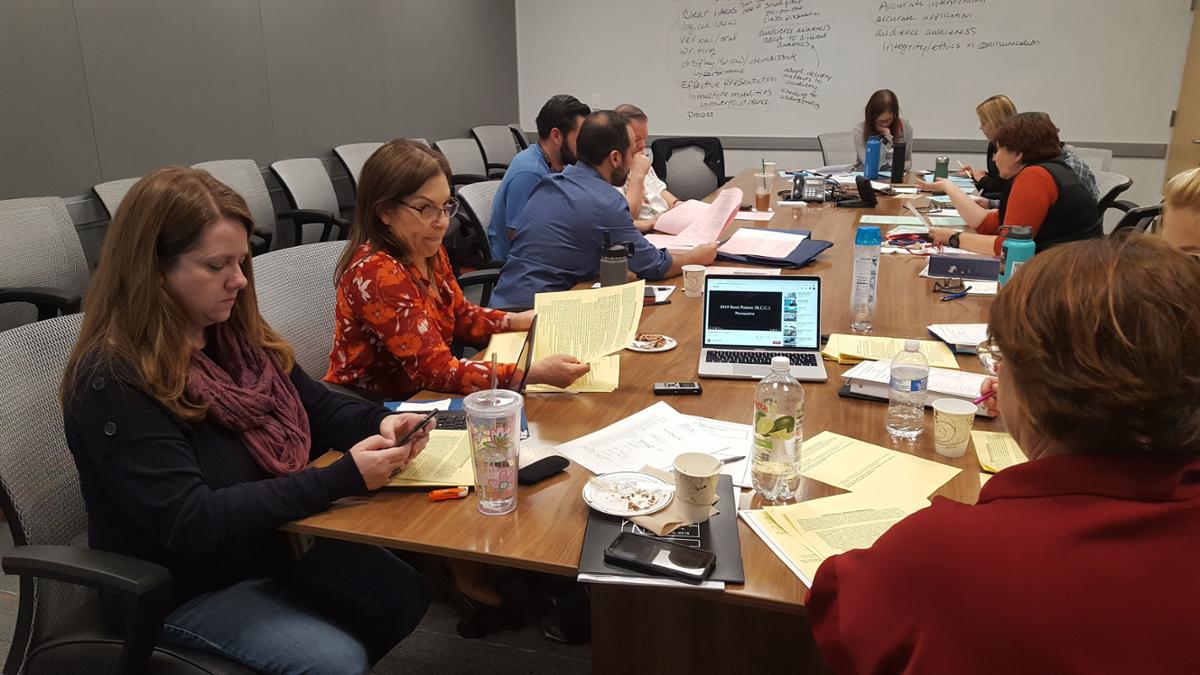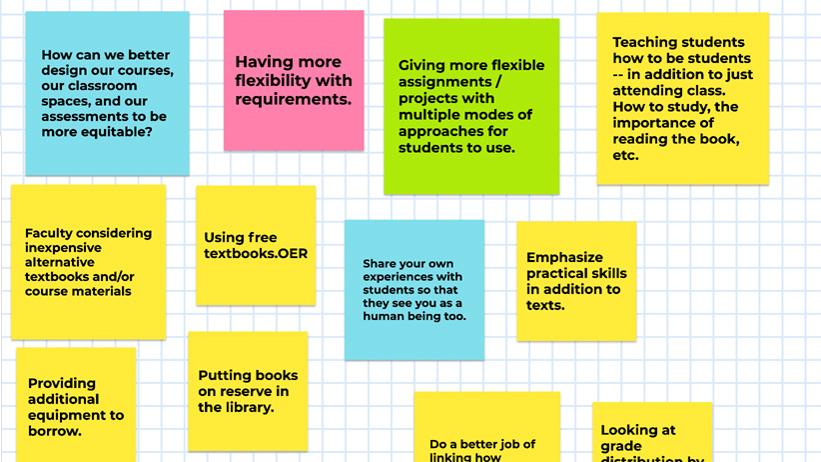Riverside Assessment Committee

Introduction
Associate faculty, download and complete this form to report and get paid for assessment projects.
This section is to see your representatives.

Look here for RCC specific resources like access to Nuventive and a quick guide to using Nuventive plus helpful resources related to service-area outcome assessment.
Read about the assessment projects done by campus colleagues.

Look here for RCC specific resources like access to Nuventive and a quick guide to using Nuventive plus helpful resources related to service-area
- A New Decade For Assessment: Embedding Equity into Assessment Praxis
- Cult of Pedagogy podcast + discussion questions
- Equity and Assessment: Moving Towards Culturally Responsive Assessment
- Equity in Action: Praxis Sessions
- SDSU's equity-driven assessment + discussion questions
- TED Talk: Designing for Justice by Antoinette Carroll
- The Hope Center's 2021 Basic Needs Insecurity Report
Using Rubrics to Help Students Make Great Baguettes
 The use of rubrics helps with consistent results, especially when it’s subjective,
based on various components and competencies in one area [Baguettes can be broken
down in the following techniques: making the dough, shaping the baguettes, slashing
the baguettes, and baking the baguettes]. It’s not just about the final product, rather
the processes and techniques along the way that result in that final baguette. Baking
is a science!
The use of rubrics helps with consistent results, especially when it’s subjective,
based on various components and competencies in one area [Baguettes can be broken
down in the following techniques: making the dough, shaping the baguettes, slashing
the baguettes, and baking the baguettes]. It’s not just about the final product, rather
the processes and techniques along the way that result in that final baguette. Baking
is a science!
The rubric uses a numerical scale, but the grading gets broken down into various components. For example:
- Flavor (was there enough salt)
- Texture (was the dough kneaded enough, was the dough over-kneaded, did the dough proof enough)
- [specific technique] Slashing (proper angle, proper depth, proper length) [in reference to baguettes]
- Sanitation (important in any kitchen…even though we may be busy, sanitation shouldn’t be slighted)
- Final Bake (was it baked properly, using the correct oven temperature, correct oven)
- Work habits (how well do they organize themselves, time management)
Because baking is such a science, ingredients and processes can turn out different results. By breaking the competencies down into bits and pieces, it allows the students to see exactly where they need to improve, or where they did an exceptional job. It spells it out for them, all while being consistent throughout the grading/assessment process. Also, being observant throughout the processes, helps tackle the assessment at the end of the competency.
I have been using this rubric for over a decade now. Prior to using this rubric, the baguettes were definitely “rough around the edges”, and definitely needed some fine tuning. Now that students have a rubric to follow along, they know ahead of time on areas to put more focus. Since we make baguettes in class a couple times prior to the assessment, it gives them the opportunity in class (and at home), to continue working on the areas necessary to produce a quality looking baguette.
Nuventive Training Manual
CurricUNET
RAC Assessment Guide
Glossary
PLO Assessment Checklist
SLO to PLO Mapping Video
PLO Assessment Form
Resources for Assessment Best Practices
- National Institute for Learning Outcomes Assessment (NILOA)
Highlights include webinars and an assessment library. Publications include reports, case studies, and books for additional research.
- Linda Suskie’s Blog
Linda Suskie is a consultant, speaker, and the author of the book Assessing Student Learning, which is available in the library for checkout.
- Association of American Colleges & Universities Value Rubrics The focus is on general education assessment in higher education. Rubrics (16) developed through the VALUE initiative are available for download. The site also contains information on capstones and signature projects, as well as models for improving student outcomes using an equity approach.
- Sustainable Assessment Revisited by David Bouda and Rebeca Solerb - 2016



